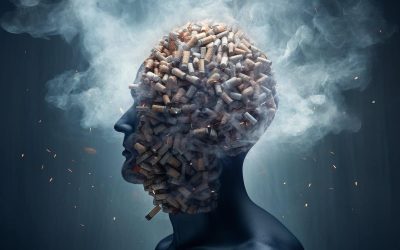By Darian Colpitts


When one experiences a head or spinal trauma, their first stop should be to a healthcare provider so that they can determine if a traumatic brain injury (TBI) has occurred. You or a loved one may have gone to the doctor or hospital to have a brain injury assessed and you may have wondered what all the tests they were doing were for, especially since some of them seem strange and unrelated to your brain. Since your brain and the rest of your nervous system control every aspect of your body’s functions, the tests performed cover many bases and can help localize where the injury to the brain has occurred. This article will discuss some of the tests commonly performed after a head trauma, and also some newer methods of testing for brain injury.
Neurological exam
The neurological exam is used to check the overall function of the nervous system. It covers a lot of bases including consciousness, mental status, cranial nerves, the somatosensory system, and the motor system.
A common scale used in consciousness assessments is the Glasgow Coma Scale (GCS), which determines the level of a patients’ consciousness. The domains assessed by the GCS are eye opening abilities, verbal function, and motor function. Within the motor domain, qualities such as pain response, posture, and ability to follow commands are assessed. During this test the patient’s pupils are also examined. The reaction of pupils to light can indicate pressure building within the brain after an injury and are an important part of this exam.
Mental status is also assessed after an injury and the examiner may take notes on a patient’s memory, language, and affect.
Examining the cranial nerves can determine dysfunction within the brainstem and autonomic nervous system after trauma. Some of the responses these exams test are: blinking response, visual acuity, eye movement, facial muscles to make different expressions, gag reflex, tongue movement, and head movement.
Examiners may also test the senses. They can test the sense of touch by doing what is called a two-point discrimination. This is when a soft, dull, or sharp object is placed in two places on the skin at the same time to see if the patient feels it and can describe the type of feeling.
The motor function of a patient can be tested by applying resistance to the limbs and asking the patient to move the examiner’s hands. Muscle reflexes may be tested using a reflex hammer in areas such as the thumb, knee, elbow, and Achilles tendon. Proprioception is the ability to sense one’s own body position and can be tested using the Romberg test, where the patient closes their eyes while standing with their feet together. If they are unable to remain upright, this is a sign that their proprioception may be impaired.
All of these tests may be performed many times after an injury to assess any changes in the patient over time.


Medical Imaging
Following a neurological exam the healthcare provider may want the patient to receive medical imaging. A computed tomography (CT) scan is common and can be used to detect skull fractures, severe bruising, bleeding, and swelling. MRIs are more precise and can pick up subtle brain changes, but they take longer to get results, are less accessible, and more expensive so are not used as often. While medical imaging is a useful tool in painting an overall picture of a brain injury, it is important to keep in mind that for mild brain injuries such as concussions it may
be difficult to detect areas that have been damaged. This is because the damage that occurs in mild TBI is usually microscopic, and current technology may not detect such small changes in the brain anatomy. However, there is research being done on ways to make imaging more accurate and able to detect these microscopic changes.
New tests in development
New rapid diagnostic tools are being developed to determine severity of brain injury when it happens. This could allow for healthcare providers to make quicker decisions regarding immediate interventions or prepare caregivers with information about their loved one and their prognosis.
Researchers are developing a blood test that detects two biomarkers (molecules found in the body that can indicate abnormalities in the body’s function) in a patient’s blood may be taken within 24 hours of the injury. These tests have shown that they can detect the severity of injury, and the results can be provided within a few minutes. The results can also be used to guide further diagnostics, such as whether a patient needs a CT scan.
The exams outlined above are a few common ones but not a comprehensive list of tests that you may have experienced. Since brain injuries are unique to each individual, the healthcare provider may decide to include or exclude other tests that make a more clear diagnosis for a specific case.
References:
Adoni, A. & McNett, M. (2007). The pupillary response in traumatic brain injury: a guide for trauma nurses. Journal of Trauma Nursing, 14(4), 197–198. https://doi.org/10.1097/01.jtn.0000318922.28746.f2
Benjamini, D., Priemer, D., Perl, D., Brody, D., Basser, P. (2023). Mapping astrogliosis in the individual human brain using multidimensional MRI, Brain, 146(3), 1212–1226. https://doi.org/10.1093/brain/awac29
Korley, F. K., Jain, S., Sun, X., Puccio, A. M., Yue, J. K., Gardner, R. C., Wang, K. K., Okonkwo, D. O., Yuh, E. L., Mukherjee, P., Nelson, L. D., Taylor, S. R., Markowitz, A. J., Diaz-Arrastia, R., Manley, G. T., Adeoye, O., Badatjia, N., Duhaime, A.-C., Ferguson, A., … Zafonte, R. (2022). Prognostic value of day-of-injury plasma GFAP and UCH-L1 concentrations for predicting functional recovery after traumatic brain injury in patients from the US track-TBI cohort: An observational cohort study. The Lancet Neurology, 21(9), 803–813. https://doi.org/10.1016/s1474-4422(22)00256-3




